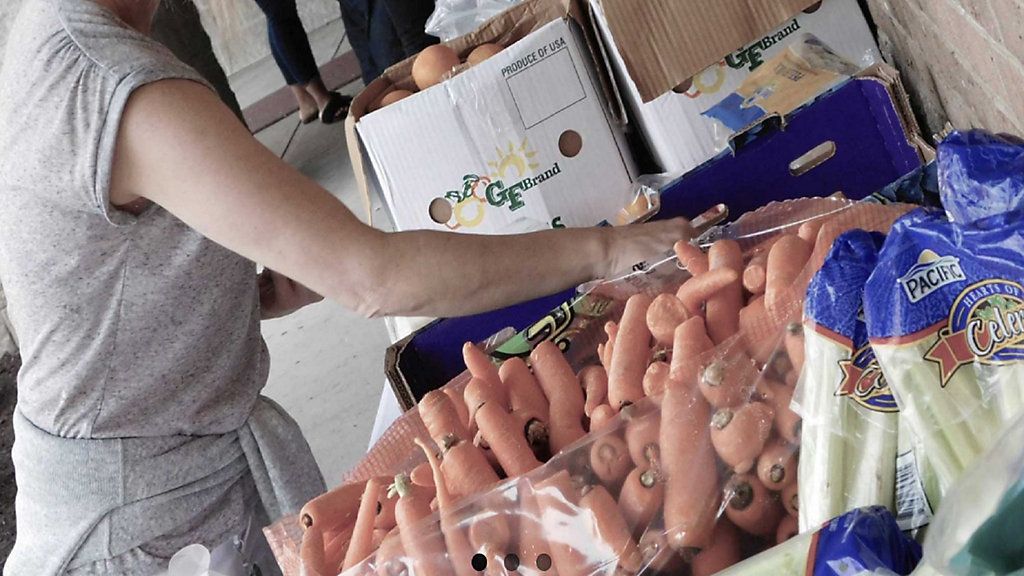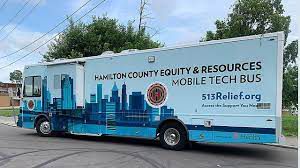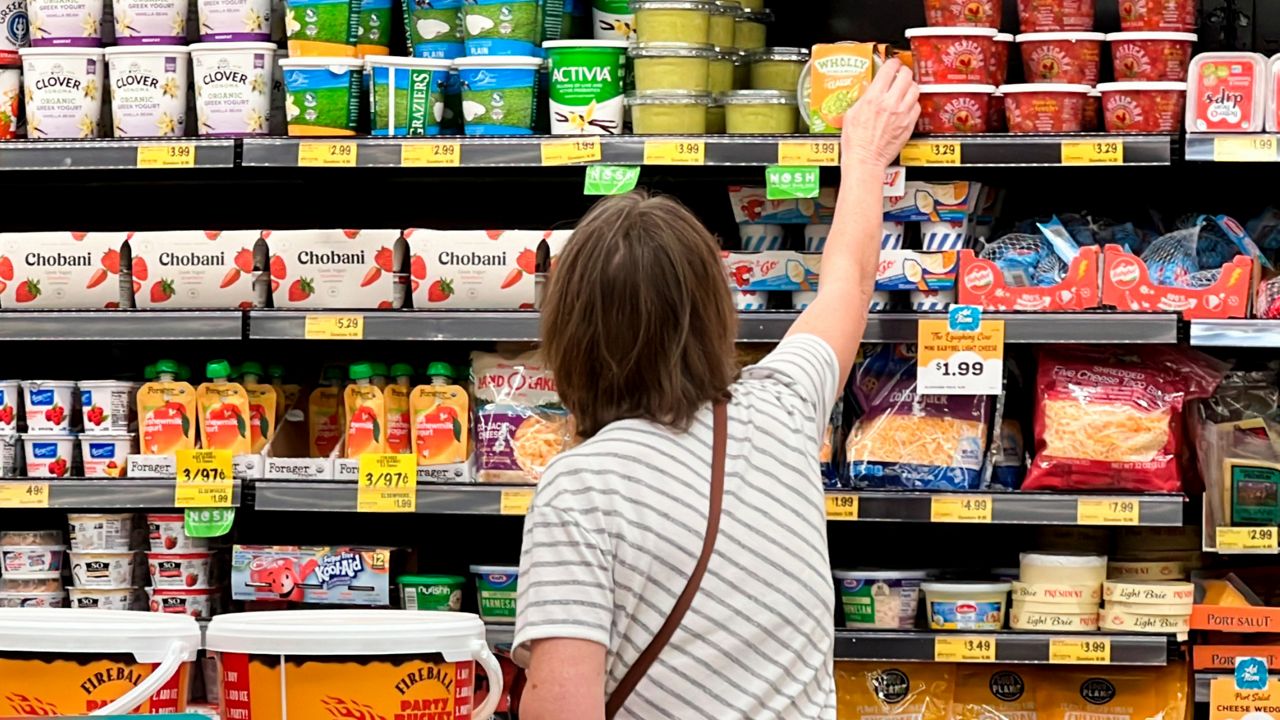CINCINNATI — With an emergency federal food aid program set to expire, local officials are letting recipients know about other resources available to help them overcome lingering financial challenges created during the pandemic.
What You Need To Know
- A COVID-related component of SNAP ends in March
- The program provided extra food benefits to families affected by the pandemic
- Hamilton County is offering new resources to help offset some of the financial hardship
- The county commissioners gave $2 million to Freestore Foodbank to address an increase in food prices and community need
Earlier this month, the U.S. Department of Agriculture, Food and Nutrition Services (USDA) announced emergency Supplemental Nutrition Assistance Program emergency allotments are ending after three years.
The federally funded program, most commonly known as SNAP, provides money to in-need families to supplement their food budget so they don’t have to break the bank paying for groceries.
Recipients can use the funds to purchase an assortment of food items at traditional grocery stores using their Electronic Benefit Transfer (EBT) card.
The emergency allotment raised all SNAP households to the maximum allotment for their household. But the program will end in March as a result of Congress passing the Consolidated Appropriations Act of 2023.

Those payments run through February.
Hamilton County recognized the decision could create financial hardship for many local families. Its commissioners are turning to Freestore Foodbank, Hamilton County Job and Family Services (HCJFS) and a number of other partners to ensure those in most dire need of support have access to it.
“The timing is unfortunate as people are continuing to struggle, especially related to inflation, but we knew these benefits would eventually come to an end,” said Hamilton County Commissioner Denise Driehaus. “As a county, we’re stepping up trying to help the organizations that will try to help the people that will have a reduction in their SNAP benefits.”
Starting in March 2020, the Families First Coronavirus Response Act allowed states to request additional emergency payments for households taking part in SNAP.
While the extra SNAP benefits ended in several states, including Kentucky, it continued in Ohio and 31 other states, along with Washington, D.C., Guam, and the U.S. Virgin Islands.
In Hamilton County, 52,489 households, made up of 106,686 individuals, received SNAP benefits in December, according to HCJFS. That number includes 49,915 children.
Like the regular program, the emergency component of the program had payout sizes determined based on the size of the household.
Individuals previously collecting the minimum allotment of $23 per month, for example, have been receiving the maximum of $281 per month. A three-person household normally receiving $180 per month is getting $740 per month.
Households already receiving the maximum amount for their size received an extra $95 per month.
Starting in March, beneficiaries of the program will only get their regular SNAP payment in the first half of the month.
Households that also receive Social Security may see their SNAP benefit decrease because of their higher Social Security benefit, according to the USDA.
“That’s huge for anyone,” Driehaus said of the food funding gap many low-income families may experience in the next few weeks.
To negate some of those financial losses, Hamilton County voted last week to redirect $2 million of its allocation of federal American Rescue Plan Act money to Freestore Foodbank.
Freestore Foodbank is the region’s largest emergency food provider to children and families, distributing more than 37 million meals each year to low-income individuals and families. The foodbank works with roughly 600 food pantries in parts of Ohio, Kentucky and Indiana.
That includes more than 60 in Hamilton County alone.
“We know it’s going to be difficult for some Hamilton County residents to put food on the table when these emergency allotments go away,” Driehaus said. “This is one way we can help these families get through this transition.”
Driehaus noted Freestore Foodbank offers more than just food. She described it as a “guide to resources,” such as transportation and housing, for those who will struggle most when the SNAP benefits end.

With the end of emergency allotments and food prices increasing due to inflation, Freestore Foodbank expects to see more families struggling to put food on the table, said Kurt Reiber, the organization’s president and CEO.
Over the past six months, Freestore Foodbank had an average of 215 families that shopped at its Liberty Street Market daily.
That number represents a 34% increase in families served during the same period for last year.
“Families are still struggling with the financial challenges brought on by the pandemic,” said Reiber, who urged Congress to reinstate the expanded Childhood Tax Credits to support families confronted with higher prices at grocery stores.
Making matters worse, the Food Price Index is up 50% from pre-COVID numbers, a metric for evaluating the state of food prices
The price of a dozen eggs has gone up from $1.59 to about $5.35, Reiber said. He noted ground beef is up 50% and peanut butter — a staple for many families — is up 45% from this time last year.
“The hope is that the county dollars will enable Freestore Foodbank to provide a minimum of a 25% discount on purchased food to Hamilton County pantries,” Reiber said. That includes the Liberty Street Market, which provides roughly 10% of all the food distributed by Freestore Foodbank.
“If families and individuals are able to support Freestore Foodbank at this time, we would encourage them to donate and help us restock empty pantry shelves and feed our hungry Tri-State neighbors,” he added.
The end of the SNAP payments are bigger than just food alone, Reiber said. He feels it will hurt many families’ spending ability overall.
In response to the changes, the Hamilton County Commission announced plans to restart its 513Relief Bus to travel across the region to share information about resources and assist individuals with accessing them.
The commissioners launched 513Relief at the height of the pandemic to connect residents with the federal, state and local programs.
On Thursday, Hamilton County will join other partner agencies to relaunch the one-stop shop, officially known as the Hamilton County Equity and Resources Mobile Tech Bus.
Since launching in March, it has reached more than 4,000 Hamilton County residents with COVID relief resources.
The 513Relief Bus “can help folks stressed out financially in other areas” by connecting them to a myriad of other resources, Driehaus said.
HCJFS is also reminding residents of the existence of other programs designed to ease some of that overarching financial burden. They range from employment opportunities and job training to child care and cash assistance.
Additional information about SNAP and other COVID-related programs is available on the Hamilton County JFS website.



